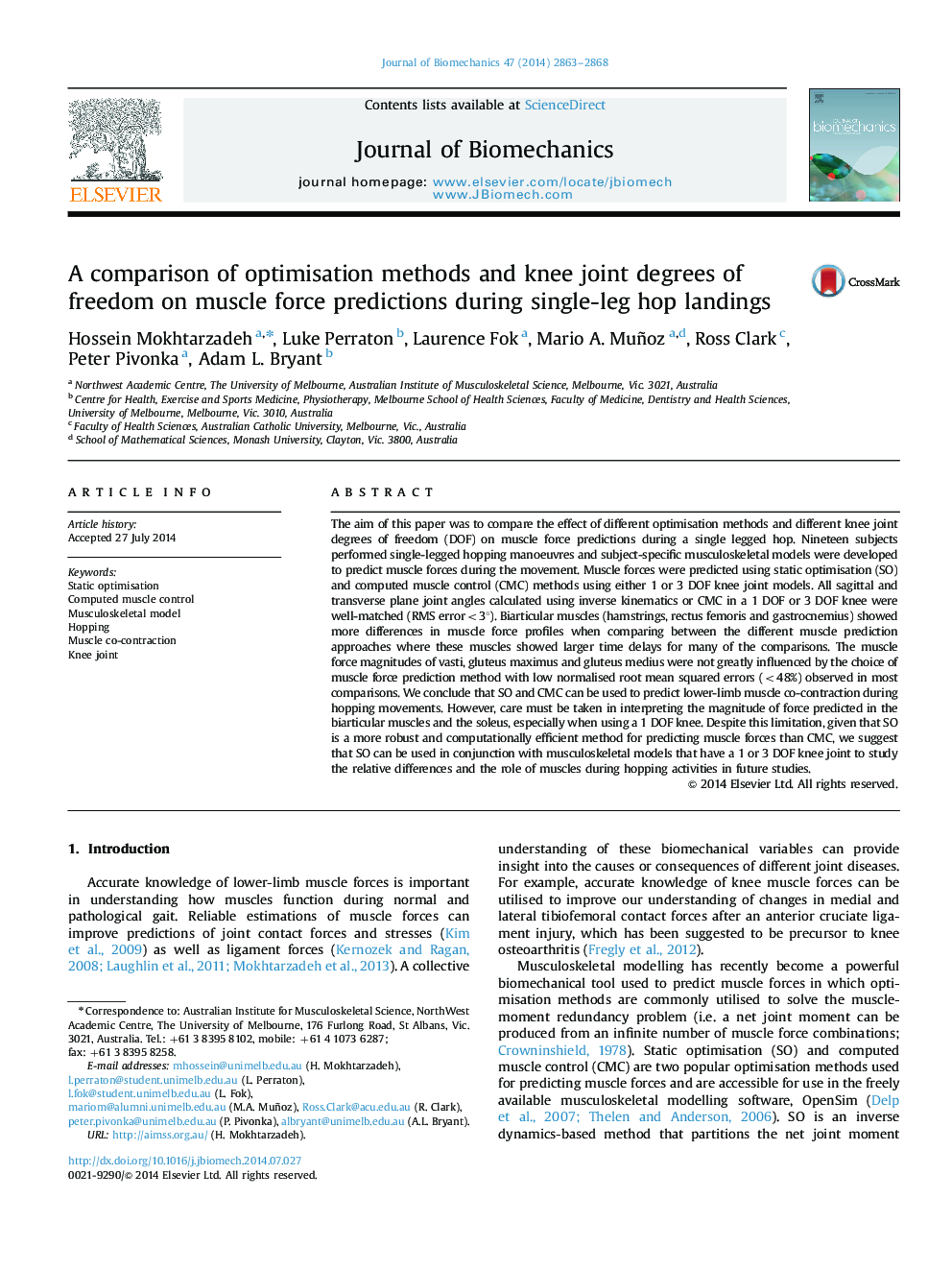| کد مقاله | کد نشریه | سال انتشار | مقاله انگلیسی | نسخه تمام متن |
|---|---|---|---|---|
| 10432095 | 910236 | 2014 | 6 صفحه PDF | دانلود رایگان |
عنوان انگلیسی مقاله ISI
A comparison of optimisation methods and knee joint degrees of freedom on muscle force predictions during single-leg hop landings
ترجمه فارسی عنوان
مقایسه روشهای بهینه سازی و درجه آزادی زانو در پیش بینی نیروهای عضلانی در هنگام فرود زمستانه یکپایه
دانلود مقاله + سفارش ترجمه
دانلود مقاله ISI انگلیسی
رایگان برای ایرانیان
کلمات کلیدی
بهینه سازی استاتیک، کنترل عضله محاسبه شده، مدل اسکلتی عضلانی هپینگ، انقباض عضله، مفصل زانو،
موضوعات مرتبط
مهندسی و علوم پایه
سایر رشته های مهندسی
مهندسی پزشکی
چکیده انگلیسی
The aim of this paper was to compare the effect of different optimisation methods and different knee joint degrees of freedom (DOF) on muscle force predictions during a single legged hop. Nineteen subjects performed single-legged hopping manoeuvres and subject-specific musculoskeletal models were developed to predict muscle forces during the movement. Muscle forces were predicted using static optimisation (SO) and computed muscle control (CMC) methods using either 1 or 3 DOF knee joint models. All sagittal and transverse plane joint angles calculated using inverse kinematics or CMC in a 1 DOF or 3 DOF knee were well-matched (RMS error<3°). Biarticular muscles (hamstrings, rectus femoris and gastrocnemius) showed more differences in muscle force profiles when comparing between the different muscle prediction approaches where these muscles showed larger time delays for many of the comparisons. The muscle force magnitudes of vasti, gluteus maximus and gluteus medius were not greatly influenced by the choice of muscle force prediction method with low normalised root mean squared errors (<48%) observed in most comparisons. We conclude that SO and CMC can be used to predict lower-limb muscle co-contraction during hopping movements. However, care must be taken in interpreting the magnitude of force predicted in the biarticular muscles and the soleus, especially when using a 1 DOF knee. Despite this limitation, given that SO is a more robust and computationally efficient method for predicting muscle forces than CMC, we suggest that SO can be used in conjunction with musculoskeletal models that have a 1 or 3 DOF knee joint to study the relative differences and the role of muscles during hopping activities in future studies.
ناشر
Database: Elsevier - ScienceDirect (ساینس دایرکت)
Journal: Journal of Biomechanics - Volume 47, Issue 12, 22 September 2014, Pages 2863-2868
Journal: Journal of Biomechanics - Volume 47, Issue 12, 22 September 2014, Pages 2863-2868
نویسندگان
Hossein Mokhtarzadeh, Luke Perraton, Laurence Fok, Mario A. Muñoz, Ross Clark, Peter Pivonka, Adam L. Bryant,
